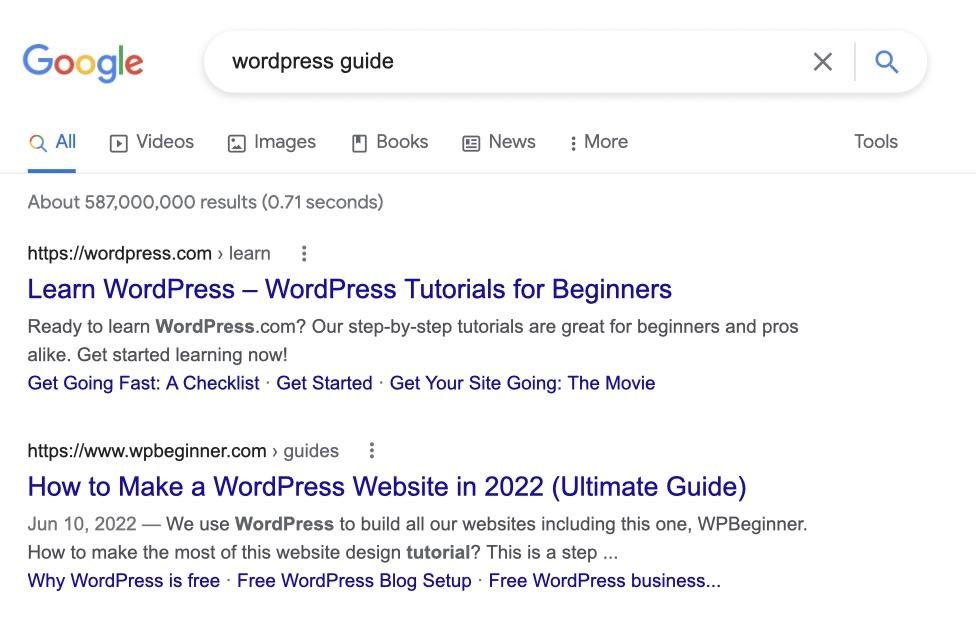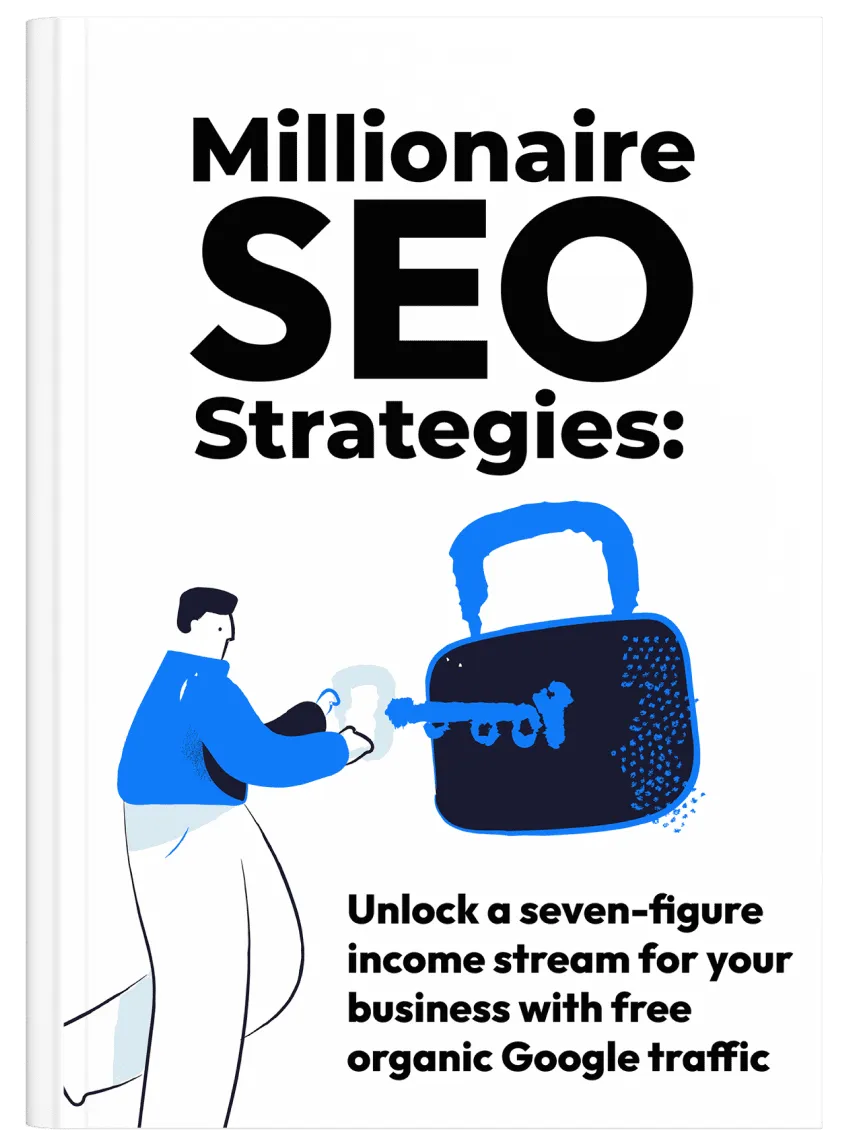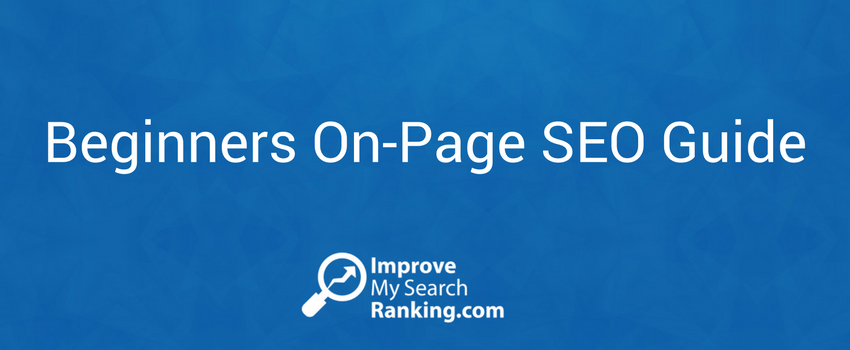
4 ways to improve the organic click-through rate
Interested in increasing your organic click-through rate?
A higher organic click-through rate has many benefits:
- It can increase organic traffic — despite ranking at the same position on the SERPs as you’ve been ranking on.
- More traffic may lead to more conversions, sales, and revenue.
- And consistently high organic click-through rate (CTR) can eventually send positive signals to Google and improve the search engine rankings of your web page.
In this post, we share 4 proven ways you can improve the organic click-through rate.
Let’s begin by first describing what organic click-through rate or CTR actually is:
What is the organic click-through rate?
The organic click-through rate or organic CTR is the percentage of users who click on your web page in the search engine results after seeing it.
For example, suppose that someone searches for a keyword on Google. Google shows them 10 pages on the first page — including your web page. 100 people see your web page, but only 8 users click on it. The rest of the 92 people either quit searching or clicked on another web page.
That means the organic click-through rate for your web page was 8%.
4 ways to improve the organic click-through rate
Now, here are 4 proven ways to improve your organic click-through rate.
1. Optimise your web page to rank higher on the SERPs
It’s easier said than done, but that’s how it works.
The higher your web page in the SERPs, the higher the organic click-through rate normally would be. That’s just the way of the search engines — top pages get the most clicks.
That’s why, your primary focus should be on optimizing your pages as best as you can. This includes optimizing your web pages for the right keywords as well as driving relevant and high-quality external and internal backlinks to your pages.
Both these methods can help you optimise your page to rank higher and, therefore, drive higher organic traffic.
2. Optimise for Featured Snippets
Have you ever noticed Featured Snippets in Google search results?
You may have also noticed that the page that appears in the search snippet isn’t necessarily the one that ranks in the first position on the SERPs. But because it appears in the featured snippet, it leapfrogs every other page on the SERP and often gets the most impressions and clicks.
Here is an example.

Although backlinko.com ranks #1 for the keyword “featured snippet”, support.google.com’s definition ranks in a featured snippet and gets more eyeballs and clicks.
That’s why, another proven strategy is to focus on creating content and pages that are more likely to rank in Featured Snippets.
This is achieved by:
- Creating question-based content and answering those questions comprehensively and concisely
- Creating high-quality and helpful content
- Using structured data to make your pages and content eligible for rich results like Featured Snippets
3. Optimise meta titles and meta descriptions
Meta titles and meta descriptions play extremely important roles when it comes to organic click-through rates. They are a window to your article’s contents.
No matter how good your content is, it doesn’t matter if nobody reads it. And most search engine users will make the decision whether to click on your web page or not by looking at the meta title and meta description.
Create optimised and engaging meta titles and meta descriptions that accurately describe what your content offers. That’s one of the easiest ways to improve the organic CTR.
Tip: If you’re struggling with this, see what other pages on the SERP are doing. You can get a sense of their traffic percentage by analysing the SERPs with a tool like SEMRush or Ahrefs.
In the following image, you can see that sendinblue.com and bigcommerce.com drive proportionately higher traffic than some of the other pages, despite ranking for a similar number of keywords. Perhaps their meta content is worth investigating.

Shortlist 3-4 competing pages on Google’s first page and see if you can find a pattern or success formula in their meta content. If you find something, replicate it and test if you get better results.
4. Match the keywords and search intent
Last but not least, always try to match the keywords and search intent in your meta content.
When search engine users search for something, they have a particular goal in mind. It could be either finding an answer to a question or buying a product. In the world of SEO, we call this “search intent.”
If you want to increase your organic CTR, it’s important that you understand and match that search intent. For example, check out the following screenshot.

The search intent of the keyword “WordPress guide” is that the searchers want to understand WordPress and how to create a WordPress website. Moreover, they also want a fully detailed guide on the topic — as reflected in the search query.
The WPbeginner.com article successfully matches all those search intents and, therefore, ranks at the top after WordPress’s own website.
Conclusion
As mentioned earlier, improving the organic CTR can have many benefits: from increased traffic to higher search rankings to more sales and revenue.
Use these four proven tips to improve your organic CTR and drive more traffic and potential customers to your local business website.
If you have any questions, let us know.








